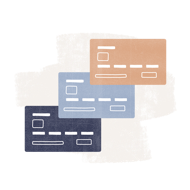Retail businesses often take a lot of risk. Business owners make or buy products with the hope of selling them in the future. Sometimes sales happen quickly, and sometimes it can take weeks or months (and deep discounts or strong promotions) to make a sale.
And even established retailers need to regularly fund advertising and marketing campaigns to keep sales going.
For many small business owners in the retail space, access to finance is one of the primary ways to ensure they can afford the expenses they need to cover to keep their doors open. traditional or online store open for business.
What is working capital and why is it important?
The term “working capital” generally refers to the amount of cash or cash equivalents payable for day-to-day business expenses. Ask your accountant and he’ll probably tell you that you can subtract current liabilities from current assets to arrive at the amount of working capital for the business.
Ask any retailer, and they’ll tell you that working capital keeps products on the shelves, lights on in the store, and advertising to keep shoppers coming through the door. Many retail businesses need to invest heavily in their inventory, which requires a lot of working capital. This is true for both brick-and-mortar retail stores and e-commerce businesses must also ensure inventory is available for sale.
Advertising, labor, inventory, rent, and other expenses add up quickly and can all fall under the umbrella of working capital.
How smart retail companies are using working capital loans to grow
Retailers must adhere to the inventory management policy. Too much and they will run into overstock situations which may require a price discount to move excess inventory. Too little and they will face stock-outs, where there won’t be enough products available to meet customer demand.
Either way, it’s not uncommon for entrepreneurs in the retail industry to need financing to ensure that the right amount of product is available at all times. Most businesses also experience at least some seasonal inventory demands. They must increase their stocks before important seasonal events such as the Christmas holidays, Halloween or the start of summer, for example. Or a popular item may suddenly take off and the business owner needs to have more in stock while customers want it.
And it’s not just inventory that requires spending money. The business may need to hire more employees during certain seasons, for example, or other costs may increase, such as utilities during a hot summer or a cold winter.
Advertising and marketing also require significant up-front expenditures. Without it, sales can quickly slow down. Businesses often turn to online advertising, which can require a serious financial commitment to reach customers and stay in touch with them.
Access to business financing will make it easier for business owners to cover regular business expenses when cash flow is not sufficient or when the business does not want to invest all of its money in one expense and be obligated to skimp on another.
What is the difference between working capital and term loans?
Working capital loans are generally short-term loans and can last from a few weeks to a few months. Term loans refer to a lump sum of money repaid over time, usually with equal payments.
That said, there is no one type of working capital loan. These loans can include:
These financing options can come from traditional lenders like banks or online lenders.
Is a working capital loan also called a cash loan?
Yes, a working capital loan can also be called a cash loan because it helps cover the cash flow needs of the business. Just as there is no one type of working capital loan, there is no one type of cash loan. In both cases, the financing is used to cover working capital needs.
What types of businesses require the most working capital?
Retail businesses are certainly among the types of businesses that have a significant need for working capital. Others include real estate, healthcare, autos and transportation.
How can retail improve working capital?
Managing working capital requires constant attention to company finances and key metrics. The “cash cycle” or “capital cycle” refers to the time it takes from when a company buys inventory to when it sells it. A shorter capital cycle can save the business money and reduce the need for longer-term financing.
How do you get there? Some ideas to consider:
- Negotiate better terms with manufacturers. You may be able to negotiate lower costs with manufacturers or a lower down payment.
- Take advantage of supplier credit. You may be able to purchase some of your inventory or supplies with payment terms of, say, net-60, which gives your business sixty days to pay.
- Improve inventory management. Inventory management software and workflow systems can offer insights that can help you better understand the inventory your business has and what’s moving and what’s not. Over time, this can help you avoid stockouts or overstocking.
- Reduce business expenses and operational costs. Reducing unnecessary expenses and fine-tuning operational costs allows you to free up capital to deploy where it’s needed most.
- Leveraged financing. Short-term financing can allow you to cover your business needs and pay for them later. Of course, interest charges reduce profits, so you need to make sure it makes sense for your business.
What are the benefits of working capital loans?
As mentioned earlier, the term working capital loans refers to several types of small business loans and financing options. Although each is different, they generally have the following benefits in common:
flexible use. The business can use the loan proceeds to pay for various day-to-day expenses.
Flexible repayment. Some of these loans offer lower payment options or payments that fluctuate based on sales volume.
Quick funding. Many, but not all, working capital financing options can be approved and funded quickly; sometimes within hours or days depending on the lender.
Best working capital loans for retail businesses
There are several types of working capital financing you can consider for your business:
Lines of credit
Access to a line of credit can give your business tremendous flexibility. Borrow what you need when you need it.
Short term loan
When you know how much you need to borrow and for how long, a term loan can be helpful. Short-term loans often have repayment periods of 3 to 18 months.
Business credit cards
Although business credit cards are a convenient way to pay for purchases, they can also be a good option for short-term financing, especially when they come with low interest rates. (0% APR introductory offers are the best offer and may be available for new purchases and/or balance transfers.)
E-commerce financing
Whether your retail business is entirely online or has an e-commerce component, you may want to consider e-commerce financing.
SBA Loans
For the most part, the SBA does not make loans, but guarantees them. (The exception is SBA disaster loans, including some pandemic relief loans.) There are a number of types of SBA loans that can be used for working capital. SBA loans generally require good credit scores and the application process can take 1-3 months.
Rate this article
class=”blarg”>


